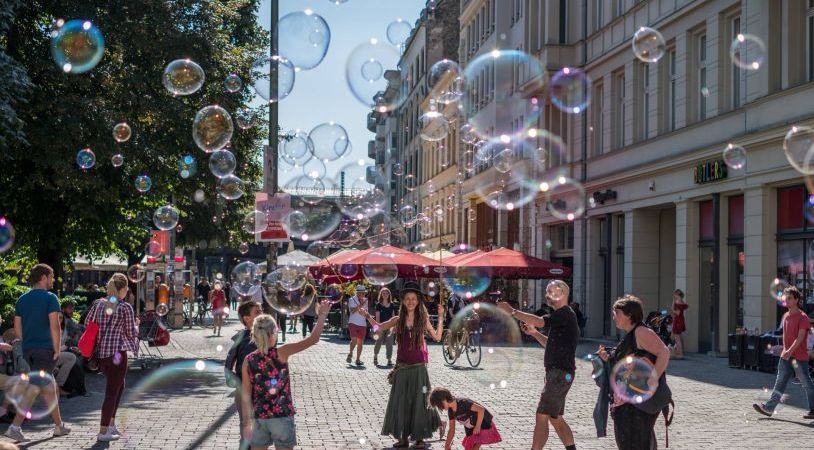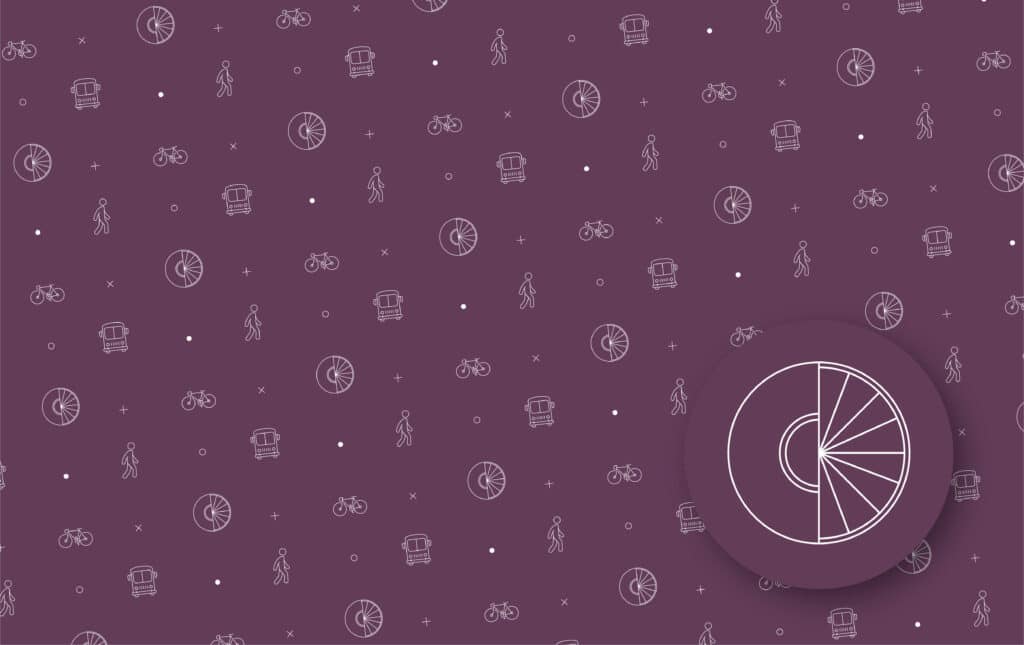Healthy Streets as a concept was introduced into London planning policy in 2014 and has since developed into a recognised design approach for streets. The vision links the physical design of the street with both transport and health matters, promoting the uptake of active travel and places an individual’s well-being within and experience of the urban environment at the core of planning the city.
Streets can be used in place-making strategies to form spaces where Londoners interact, where children play, where individuals shop, work and travel and where daily life is the fundamental element. As 80% of Londoners’ trips are undertaken completely on streets, high quality design will have a significant impact on improving quality of the life. Despite this, many streets are still dominated by a ‘road’ mindset intended for vehicles and this is where the Healthy Streets Approach is designed to make a difference.
THE POLICY CONTEXT
As outlined in the Draft New London Plan (2018) and the Mayor’s Transport Strategy (2018), the Healthy Streets Approach is designed to improve personal health and reduce health inequalities through promoting active, sustainable travel throughout the capital.

SYSTRA’s approach is to respond more directly to the urban fabric and quality, using real journey data, and to represent that information not just as a series of scores but as a visual matrix, a map of interconnectivity by time. This is a far more intuitive approach than just another ‘data-in-data out’ black box. Using the matrix map, all stakeholders can more easily envisage where facilities might need to be enhanced, a street pattern altered, or a constraint such as a railway line overcome
It situates transport as part of the fabric of a place rather than just another structure within it. It is a way of thinking about places, not simply a tool for ordering priorities. Tools like these can help address thorny problems such as how to masterplan for 20-minute communities in developments that have to scale up in stages, sometimes from an initial development of tens of dwellings to a final development of thousands. They situate the process in a framework that is always focussed on place-building no matter how powerful the counter currents of other commercial incentives might be at any stage of the project. It is only by keeping that idea of place alive at all times that we can avoid the mistakes of the past, mistakes that will be paid for the negative impact of climate change.
Jane Jacobs, a journalist, activist and campaigner credited with saving New York’s Greenwich village from the highway-centred developers of the 70s, described cities as ‘immense laboratories of trial and error, failure and success’. Less pithy than Shakespeare, perhaps, but driving at the same thing. Successful cities and towns are formed over time in response to the needs of their populations and that is where they get their energy and life
Not everything works; and that is OK if there is space to respond and to change and learn from the mistakes of the past. The 20-minute community builds in that space if we do it right. We all live in our own separate geographies and these are layered and overlapping. The 20-minute community doesn’t lock anyone into a single mode of life but adds layers to the fabric.
THE CAR LOSES ITS DOMINANCE
The car loses its dominance but doesn’t disappear. In fact, even drivers gain when more people choose to cycle and walk as congestion decreases along with all its stress. Some people will always rely on their car, of course. Yet, how we use cars will change over time, car ownership may reduce outside of cities too as we begin to hire or share cars more, as proven in our larger cities. Electric vehicles and how we charge them will be part of the future transport mix. But if we can build places that tempt people out of their cars instead of only coercing them, we can turn the energies that are currently being wasted on campaigning against LTNs and temporary bike lanes into something positive.
We can open the door to the discovery of advantages that go far beyond the gains in health that a more active and less polluted life brings. We can highlight the deeper social and emotional connection with home. The pleasures and excitement of chance meetings and discoveries. The simple joy of more human connections – and more opportunities to live our lives.
 Australia
Australia  Brazil
Brazil  Canada
Canada  China
China  Denmark
Denmark  France
France  India
India  Indonesia
Indonesia  Ireland
Ireland  Italy
Italy  Malaysia
Malaysia  New Zealand
New Zealand  Norway
Norway  Poland
Poland  Saudi Arabia
Saudi Arabia  Singapore
Singapore  South Korea
South Korea  Sweden
Sweden  Taiwan
Taiwan  Thailand
Thailand  United States
United States  Vietnam
Vietnam 

